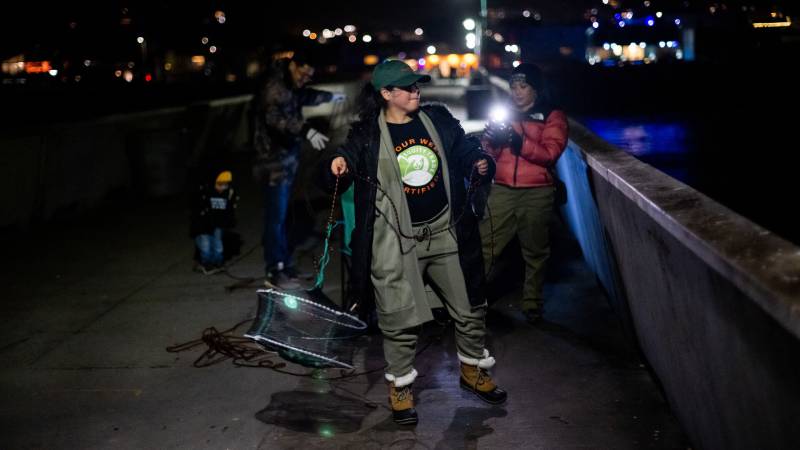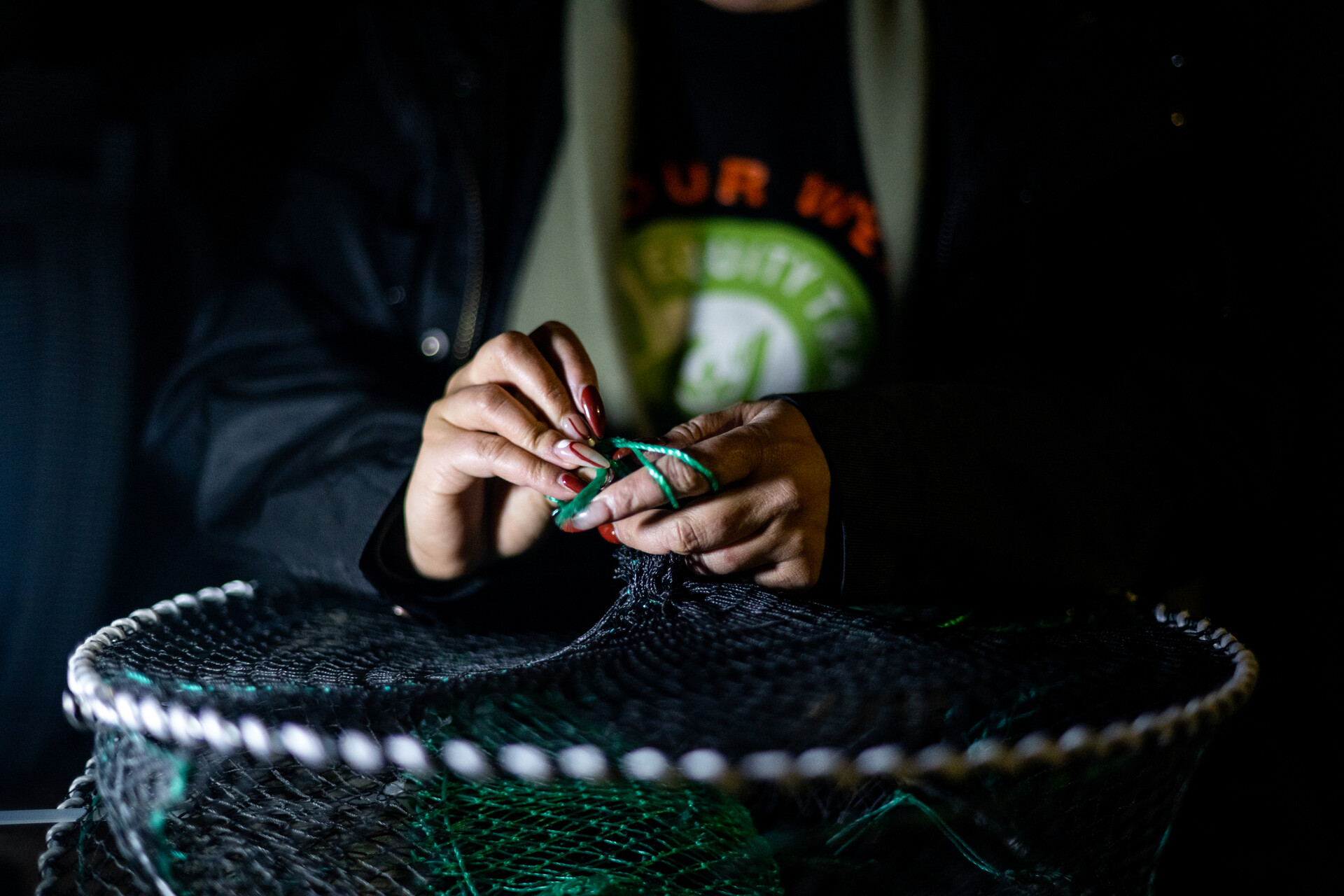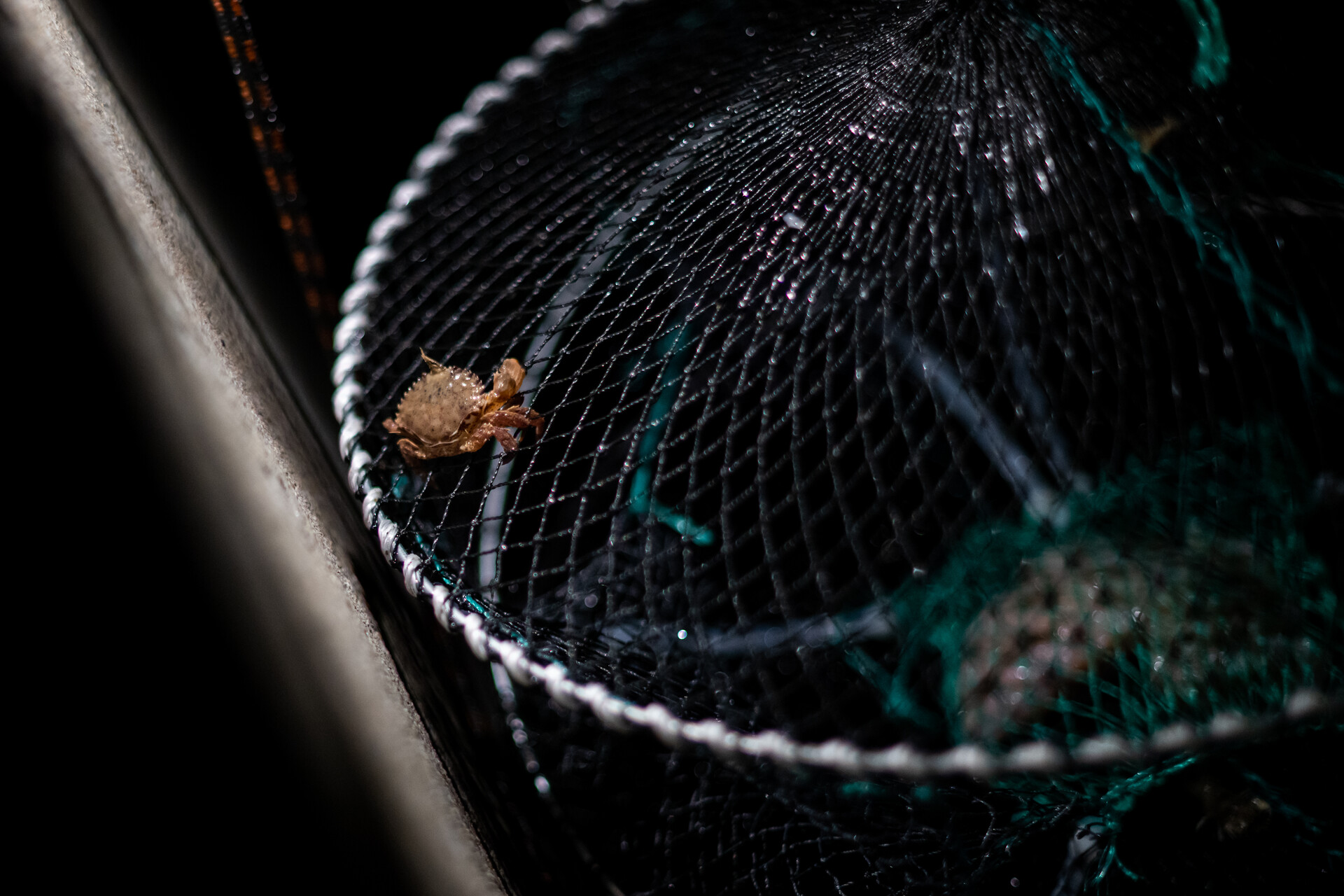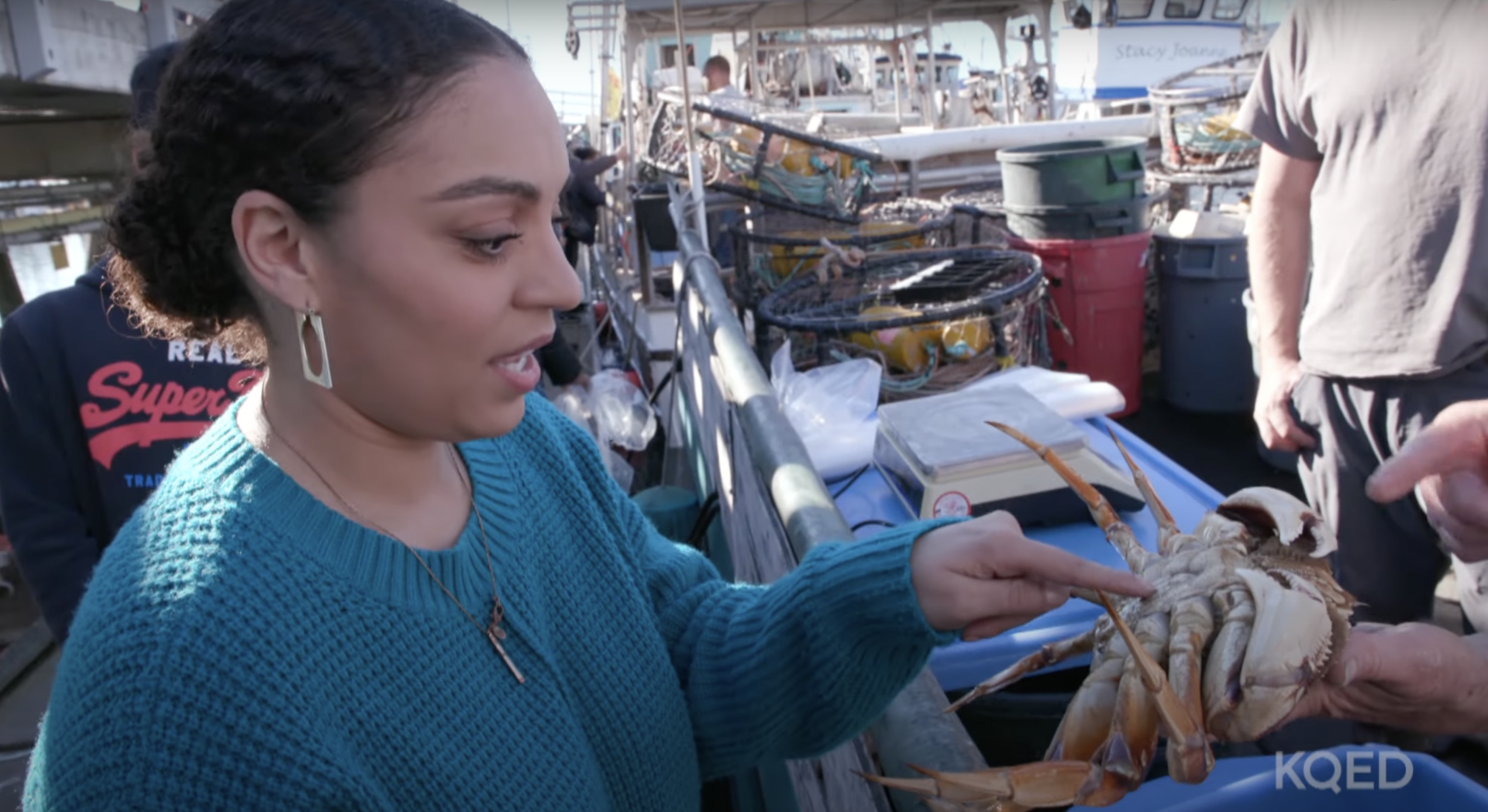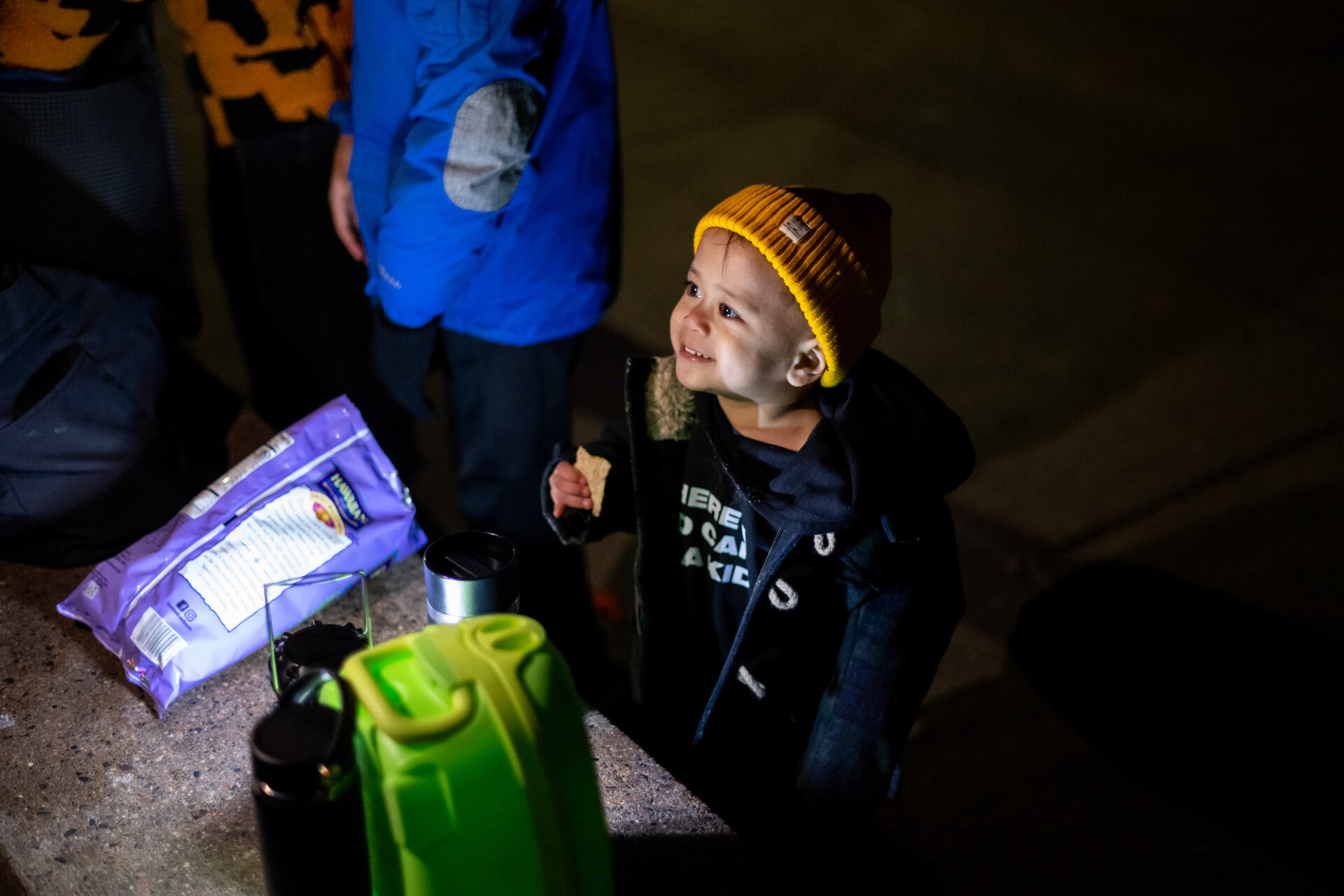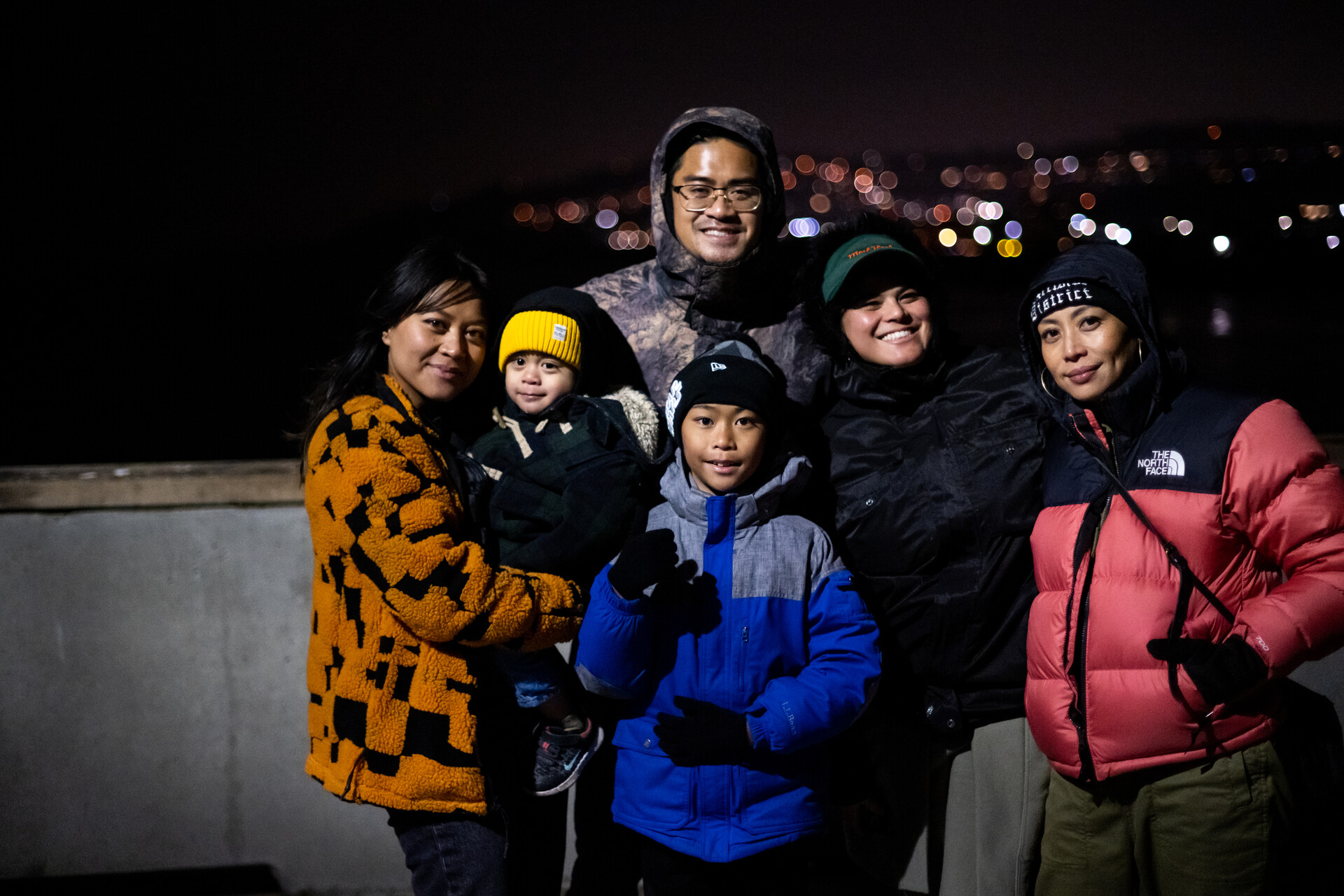Frisco Foodies is a recurring column in which a San Francisco local shares food memories of growing up in a now rapidly changing city.
I
never learned how to fish when I was growing up in San Francisco, but I did learn how to go crabbing. We lived on Treasure Island — or T.I., as the locals call it — back when the man-made island was still an active naval base. All through my childhood, I was surrounded by the damp, salty smell of waves crashing upon an artificial seawall — the cawing of gulls, faint tapping of metal hooks on flagpoles and ever-present foghorn in the distance.
On winter nights, when the weather permitted, my friends and I would bundle up and walk out onto the wooden pier with a crab net, a package of defrosted chicken thighs ready to be strapped into the bait cage. As a kid, it was staying up late that made it exciting — the fattest Dungeness mostly fed at night. As a teenager, it was the camaraderie of wind-whipped faces and timing our beers to when we pulled up the net to examine our haul. I learned how to pick a stray crab up off a net — from behind — before it could scuttle away on the pier, then flip it over to see if we were lucky enough to get some roe out of the catch.
When our eyes started drooping and our stomachs started growling, we’d head back to the house for a feast.
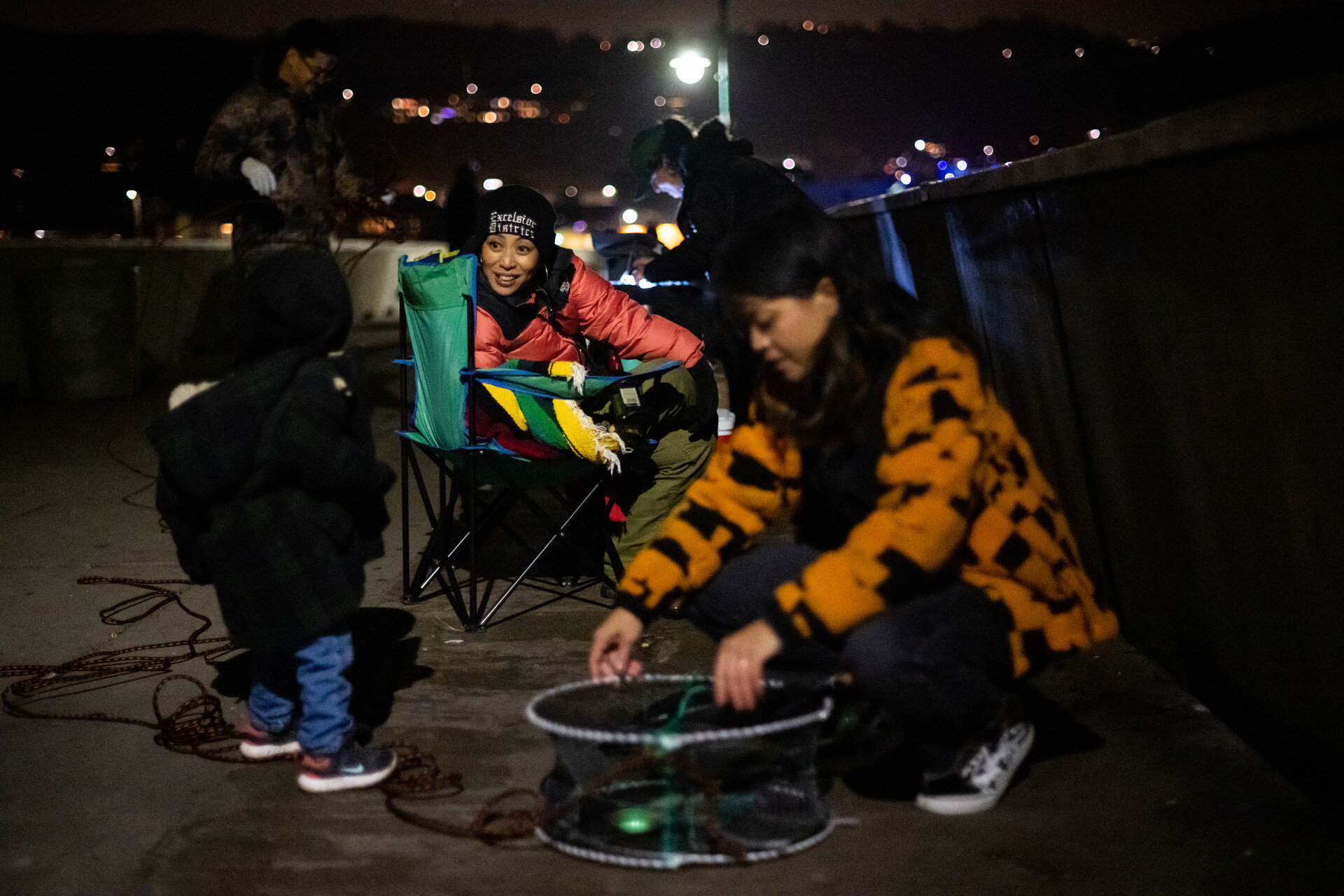
Every Filipino American knows that the first order of duty after placing the crabs in the sink is to cook the rice, which was the only other dish we’d prepare to make it a full meal. Someone would boil the water or fire up the oven, and then each household would cook the crab according to their preferred method. Most of us boiled them in seawater (or salted water) to season the meat. We learned to first freeze the crabs to make them sleepy, then throw them in a steamer pot so that they retained their natural salinity.
